After testing some Zener diodes and regular transistors (see earlier posts), some attempts with high frequency transistors, to generate white noise (noise power constant with frequency).
So far we have found that Zener diodes generate high noise power, and are rather flat out to 1.5+ GHz (if proper package and mounting is chosen). However, there is appreciable 1/f noise (increase of noise power) below 100 MHz, and this is difficult the equilize with just plain R-C networks.
Another attempt, with regular tansistors – they don’t have enough noise power at high frequencies, past a few 100 MHz.
Now, finally, I have received some 6 GHz BFR93A and 22 GHz BFG410W transistors, from my stock of parts back home in Germany, and have put these to the test. Same circuit is used like before, with positive current fed into the emitter, and the base grounded via some resistors (transistor is run in emitter-base breakdown condition to generate noise).
These are the parts concerned, some general notes – the BRF93A is a very useful part for all kinds of RF applications, and available at low cost.
The BFG410W, it is also quite remarkable and I use it a lot for LNA (low-noise amplifier) designs – hard to beat at their cost, delivering considerable gain, at low power. Unbelievable what the semiconductor folks have been able to achieve, a 22 GHz transistor, for a few cents each!
Here, the ENR results, vs. bias current, in mA.
BFR93A
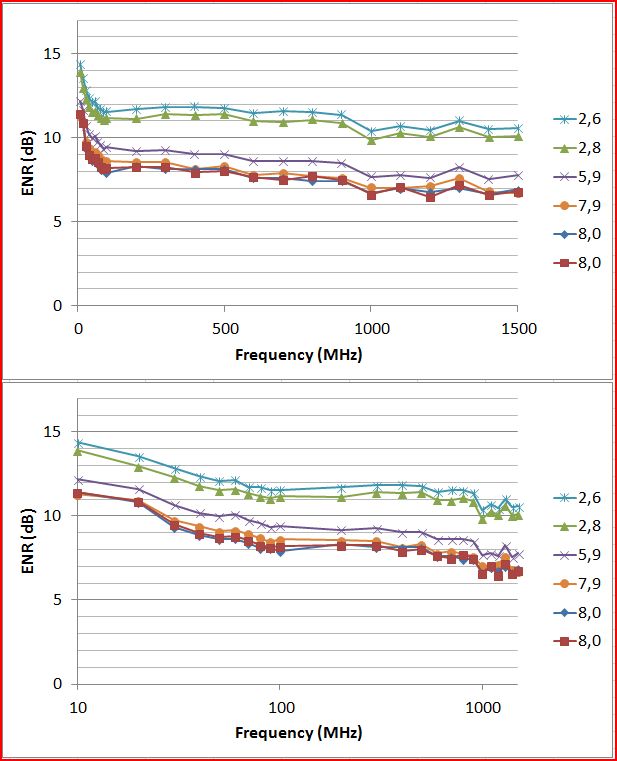
-note that the ENR increases at low bias current!
As can be seen, and don’t ask me why, the BFG410W generates much less noise. Some quick change of the attenuator pad – 4 dB less attenuation. Just to check if this has any effect (besides increasing output power) – all seems well behaved and power is increased without changing any of the general characteristics.
BFG410W – lower 3 traces are 390 ohms parallel, upper 3 traces are 130 ohms parallel output attentuator (390 ohm 0603 pad resistor, paralleled with 390 or 130 ohm 0603 resistor)
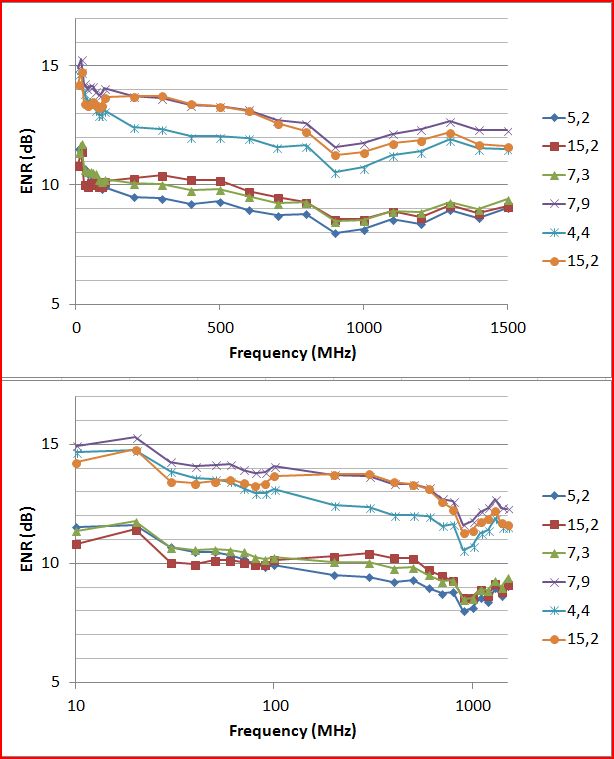
The BFG410W appears to have the best white noise characteristics so far, note that the measurements are still not too accurate, mainly for screening of parts. With proper bias current selection, flatness, 100 to 1000 MHz, <0.2 dB should be possible. Will do some more experimentation, and fine-tuning of the filter/equilization components; ideally, the noise power should be a bit higher, to be able to use a larger, well-matched attenuator, giving good output SWR. Also, I think it is now about time to fabricate some better HF boards (still using FR4, but precision made), to get a reproducible assembly, and to have several TWS-15N prototypes made and characterized.

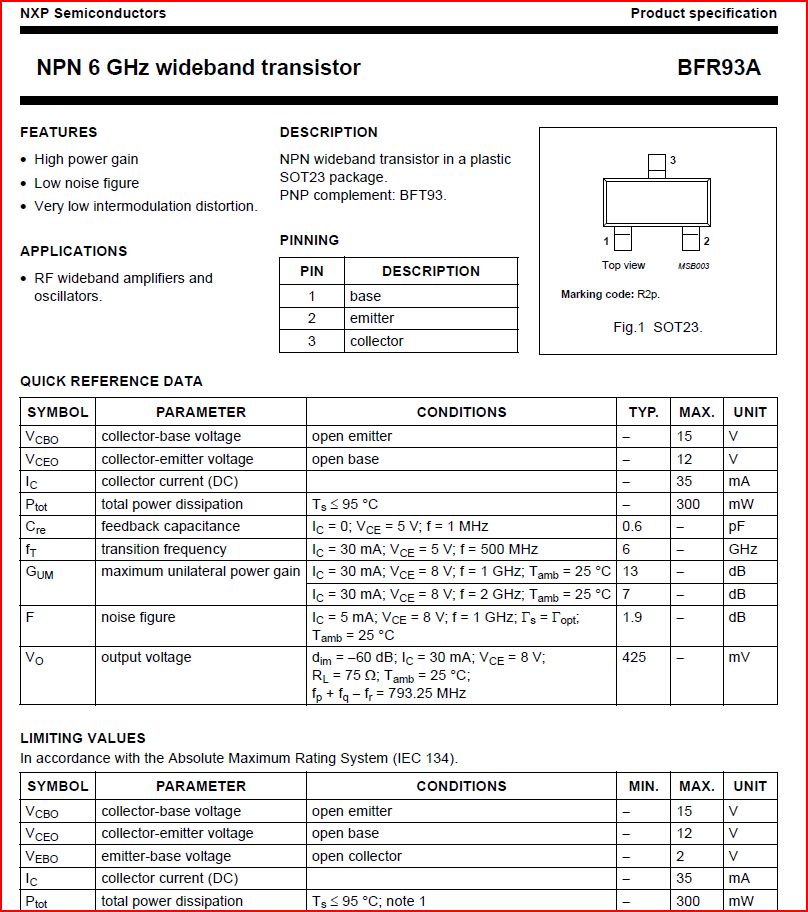
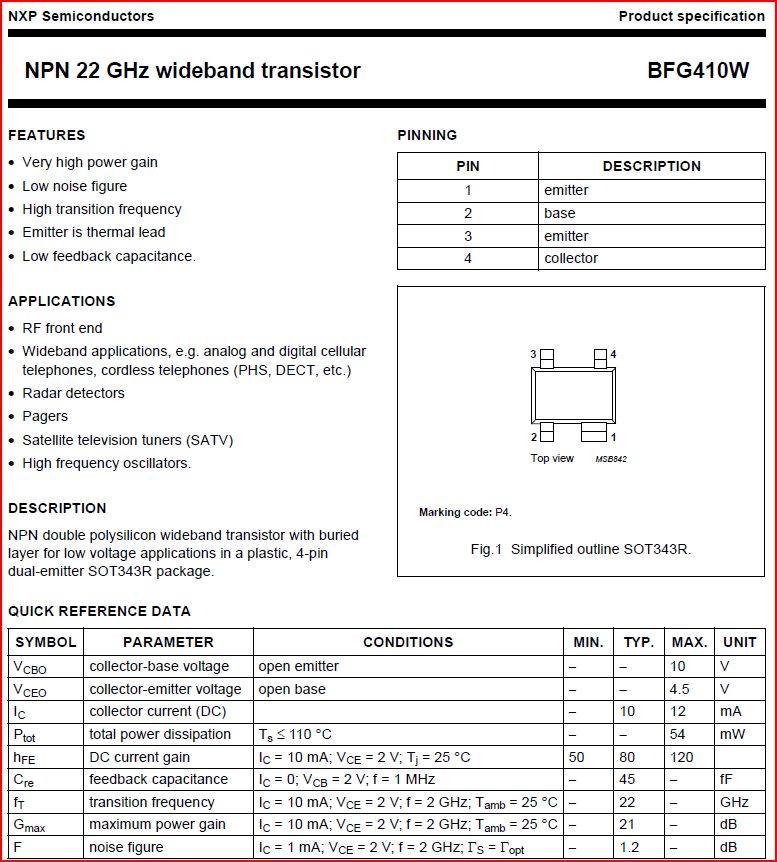
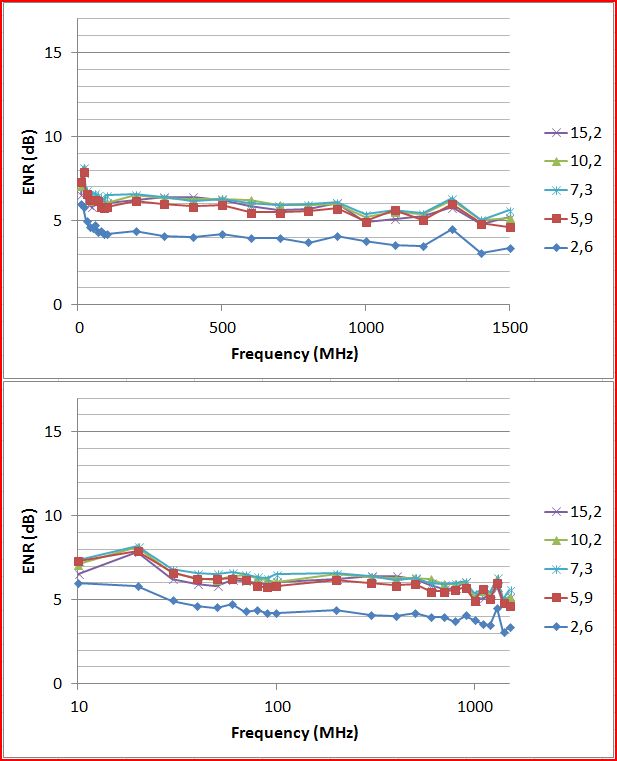
Hi,What software is used to record 8970B data, it looks very powerful
It is called EZGPIB, a little outdated but easy to use. Recently I use Phython almost exclusively for such purposes.